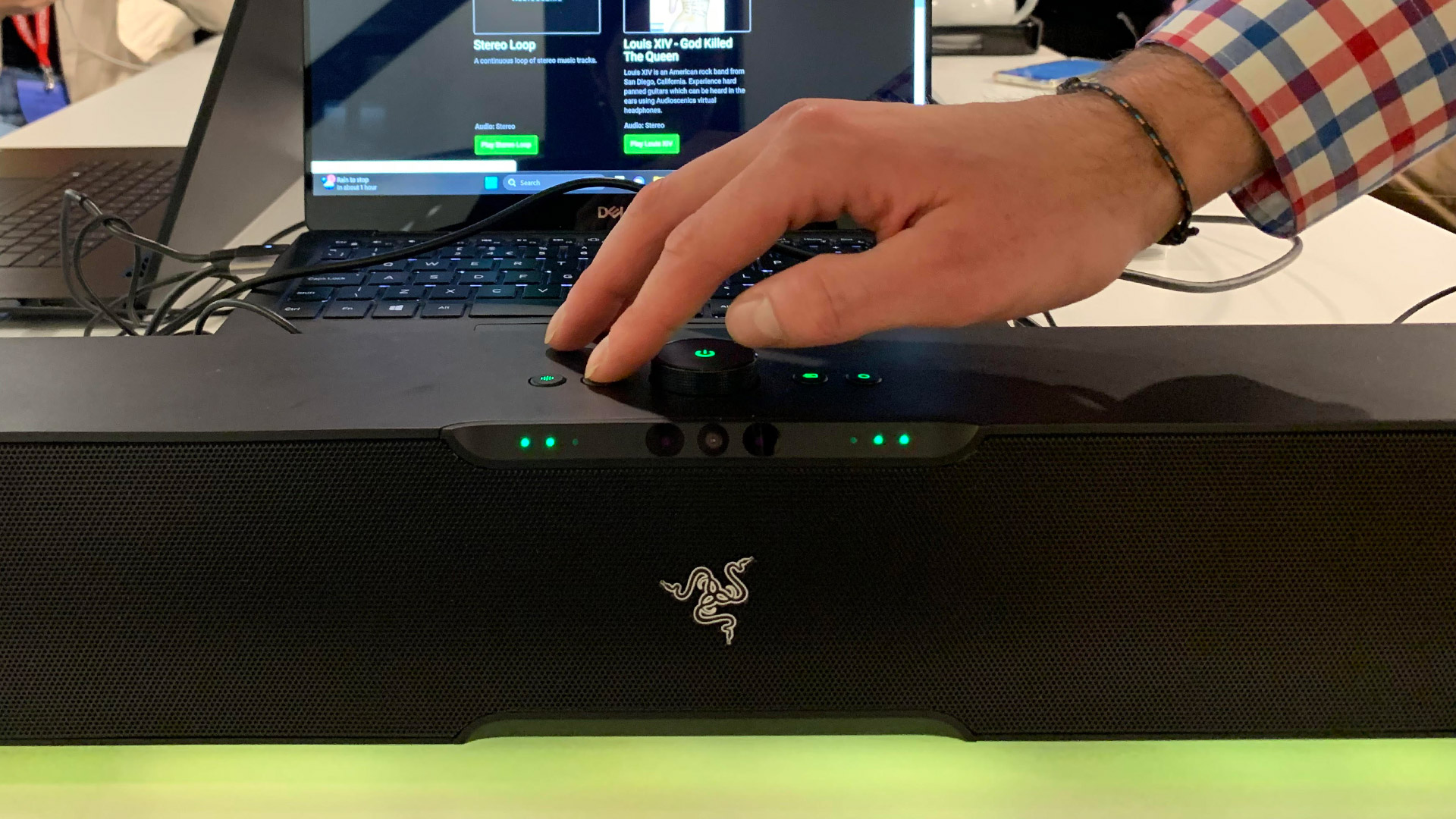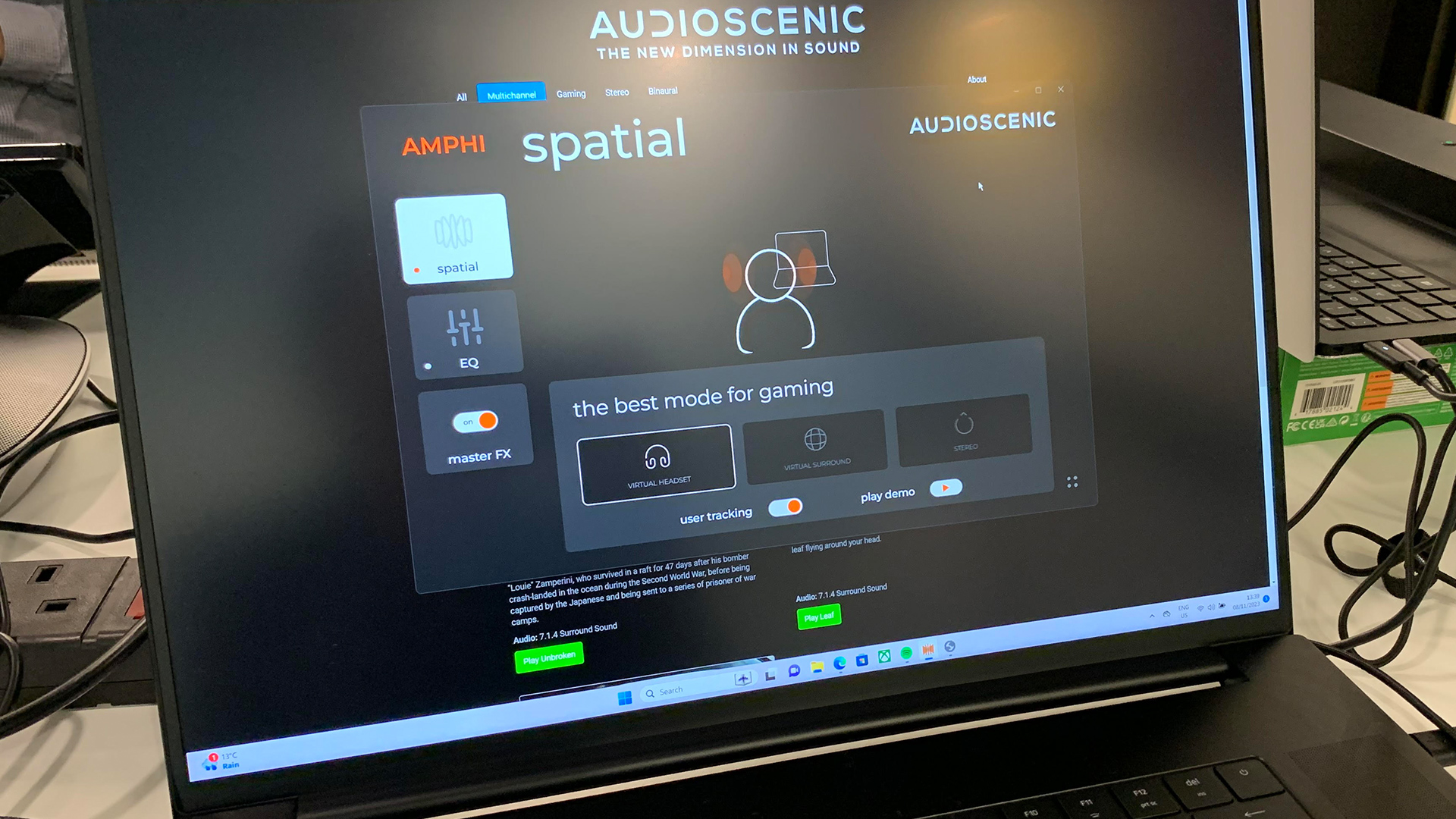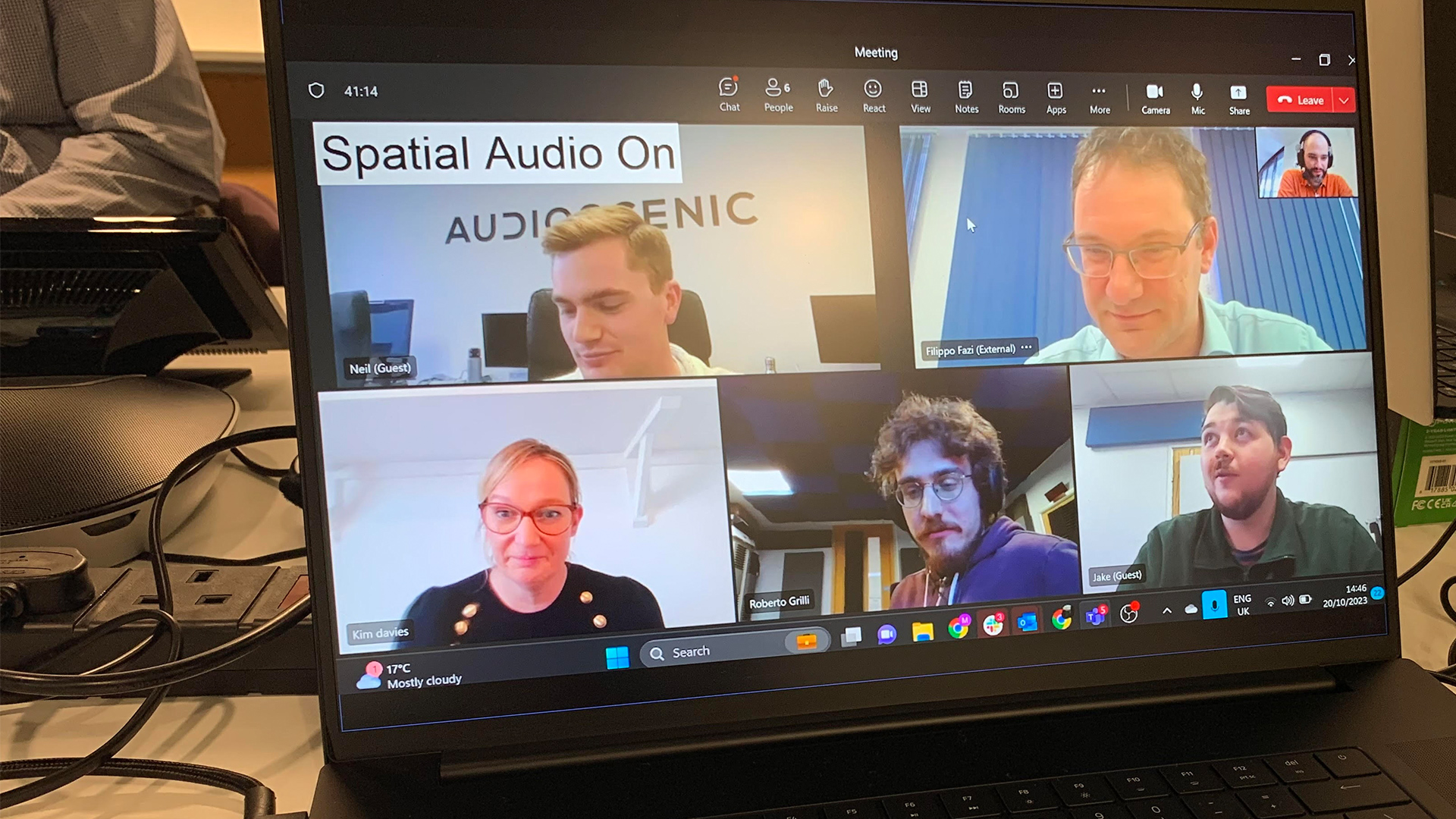I tried the tech that gives you personal Dolby Atmos sound without headphones, and it’s game changing

Love the idea of immersive spatial audio but don’t want to fork out for expensive headphones, Dolby Atmos soundbars or surround sound systems? You’re in luck. Audioscenic has developed a 3D sound optimizing technology, and after trying it out using THX spatial audio on Razer’s Leviathan V2 Pro soundbar and the Acer Predator Helios 3D 15 SpatialLabs edition laptop, I can really see its game-changing potential for anyone looking to get more immersive audio without the need for headphones or multiple speakers.
The idea behind it is that it combines object-based audio like Dolby Atmos with head-tracking computer vision – camera sensors – to create a virtual 3D sound no matter where you’re sitting. Part of the research for the tech was carried out by the co-founder of Audioscenic, Filippo Fazi, who is the professor of audio and signal processing of the Institute of Sound and Vibration Research at the University of Southampton.

The new tech is still very much in its early stages so there are some limitations – mainly the fact that it only currently works with one person, and that there are only two products that you can purchase to access it at the time of writing. But Dr Marcos Simón, who carried out the other half of the research as chief technology officer and co-founder of Audioscenic, tells me that this won’t be the case for much longer, with plans to roll it out more widely soon.
What is Audioscenic’s virtual 3D processing tech and how does it work?
The main goal with any spatial audio format, such as Dolby Atmos, IMAX Enhanced or DTS:X for example, is that it’s trying to completely envelop you in sound as if you’re experiencing it in person. The idea is that you should hear sound correspond to what you see on screen from the correct directions. It should also feel like it's coming from a particular speaker source. In fact, that’s the aim of any entertainment tech – to be as immersive as possible. But the tricky part with translating these 3D sound formats into sound that truly surrounds you is the hardware you use.
Some of the best headphones can achieve this, but maybe you don't want to cut off from the world – and the ones that do it well, such as the Bose QuietComfort Ultra Headphones or AirPods Max, are very expensive. Naturally, a Dolby Atmos speaker system is great at this, but again that involves a ton of expense, and actually placing a load of speakers around a room, which you may not want.
Making this more flexible is where Audioscenic’s signal processing beamforming technology comes in. Simón says that it isn’t meant to compete with the likes of Dolby Atmos or other spatial audio formats, but instead better break down the barriers for consumers to actually use them.

The software works by using a sensor – in the case of the Razer Leviathan V2 Pro soundbar this was modified to have a camera at the front of it, while the Acer Predator Helios 3D 15 SpatialLabs Edition laptop used the internal webcam already built-in – to track your head in real-time to make sure that it’s delivering precise spatial audio no matter where you’re sitting in a room or if you move around.
Sign up for breaking news, reviews, opinion, top tech deals, and more.
“We sense where you are with the camera and then control the sound out of the speakers to make this virtual headphone effect. And to do that, to control the sound, that’s quite complicated. It uses clever algorithms, which is the sort of origin of the stuff that Marcos invented when he was at university. It’s signal processing technology that runs on a chip, but the good thing is that all of that is irrelevant and invisible to the end consumer. All it does is it sounds better and they don't have to do anything. You don't have to set speakers up. You just sit down in front of it and then it works better,” David Monteith, CEO of Audioscenic, tells me.
What does Audioscenic's wireless spatial audio tech sound like?
During a demo, I was able to have a listen to how Audioscenic's wireless spatial audio tech sounded while playing a video game. This was set-up with a laptop and the Razer Leviathan V2 Pro soundbar.
While walking through what looked like an abandoned space ship, I could hear a buzzing drone flying to the left of where I was standing, which as I turned – in the game – to look at it the audio adjusted with me, moving to the center speaker. This quick adjustment of the audio direction continued seamlessly throughout my demo.
However, it's worth noting that I was sat relatively close to front of the soundbar, as this helped with the head-tracking. That means at this stage the tech is more suited to gamers rather than movie watchers. I also found that if I did move my head that this affected the 3D effect, but this is something that Audioscenic is working on to expand its use to more than one person.

The other use cases for the tech outside of gaming – and eventually home entertainment – are for virtual video calls and listening to audio in your car. I got to preview a Microsoft Teams conference call while at the demo and was immediately impressed.
The audio from anyone speaking on the left side of the screen corresponded with what I could hear from the left speaker, which made the call sound more natural and not as static, which is what I’m used to when on a video call.
When can we expect to see more of Audioscenic’s technology?
The beamforming technology, thanks to a partnership with THX, has found its way into products from Razer and Acer. Razer first unveiled the Leviathan V2 Pro soundbar at CES in Las Vegas in January 2023. Meanwhile, Acer conducted a demo with Audioscenic's tech at Computex earlier this year using the Helios 3D 15 Spatial Labs Edition (but it's not being currently licensed in the product). Audioscenic is also set to broaden its scope to even more manufacturers soon.
At the time of writing, Audioscenic is positioning the tech to be used mainly by gamers as the software can be used on any laptop or desktop machine to greatly enhance the immersive audio performance – as Monteith puts it: “It’s spatial computing, but on your laptop.” But as soon as it perfects it for multi-person use then you can expect them to push for speaker companies to include it for watching movies and listening to music at home.
“We wanted to make something more practical for consumers,” Simón explains. “The [Razer Leviathan V2 Pro soundbar, for example] is replacing binaural audio, which is even more realistic. Neuronal view is how we normally listen. Right? Basically, we have two ears and with those, we know [which direction] sound is coming from. Technologies like Dolby Atmos create surround sound from speakers that are far away, around us. [But with this technology,] you can hear a whisper. It’s even more realistic.”
You might also like

Amelia became the Senior Editor for Home Entertainment at TechRadar in the UK in April 2023. With a background of more than eight years in tech and finance publishing, she's now leading our coverage to bring you a fresh perspective on everything to do with TV and audio. When she's not tinkering with the latest gadgets and gizmos in the ever-evolving world of home entertainment, you’ll find her watching movies, taking pictures and travelling.